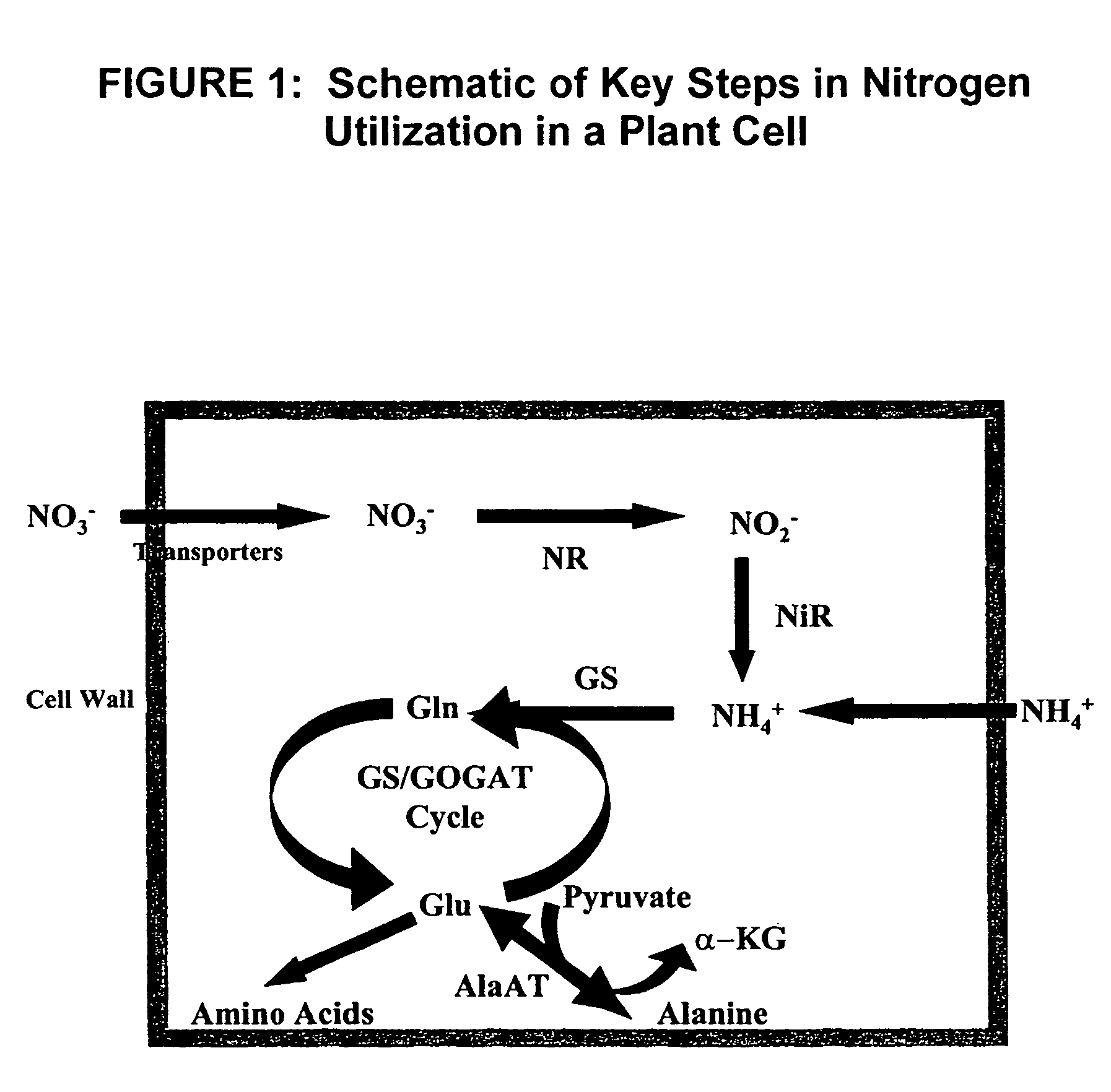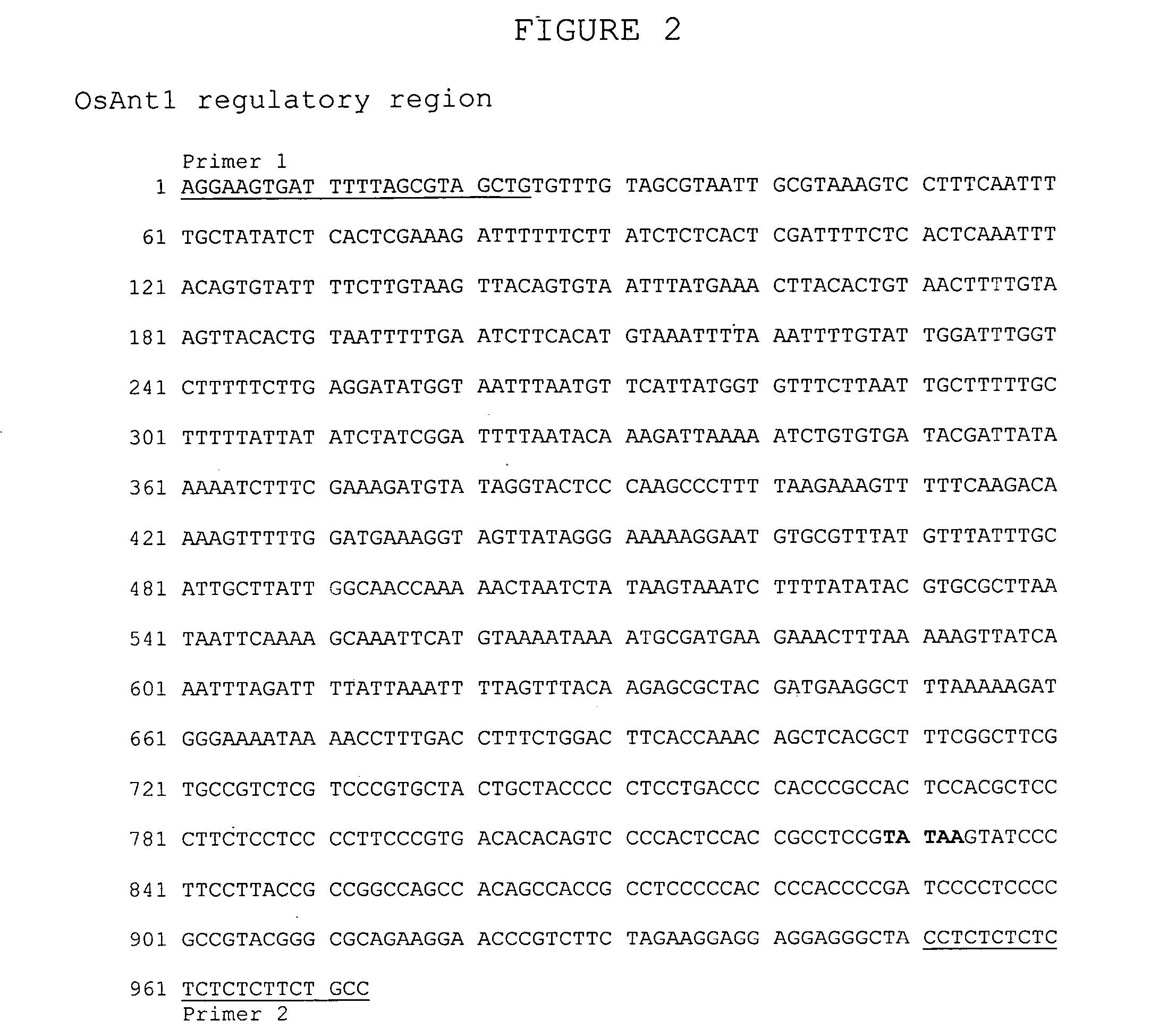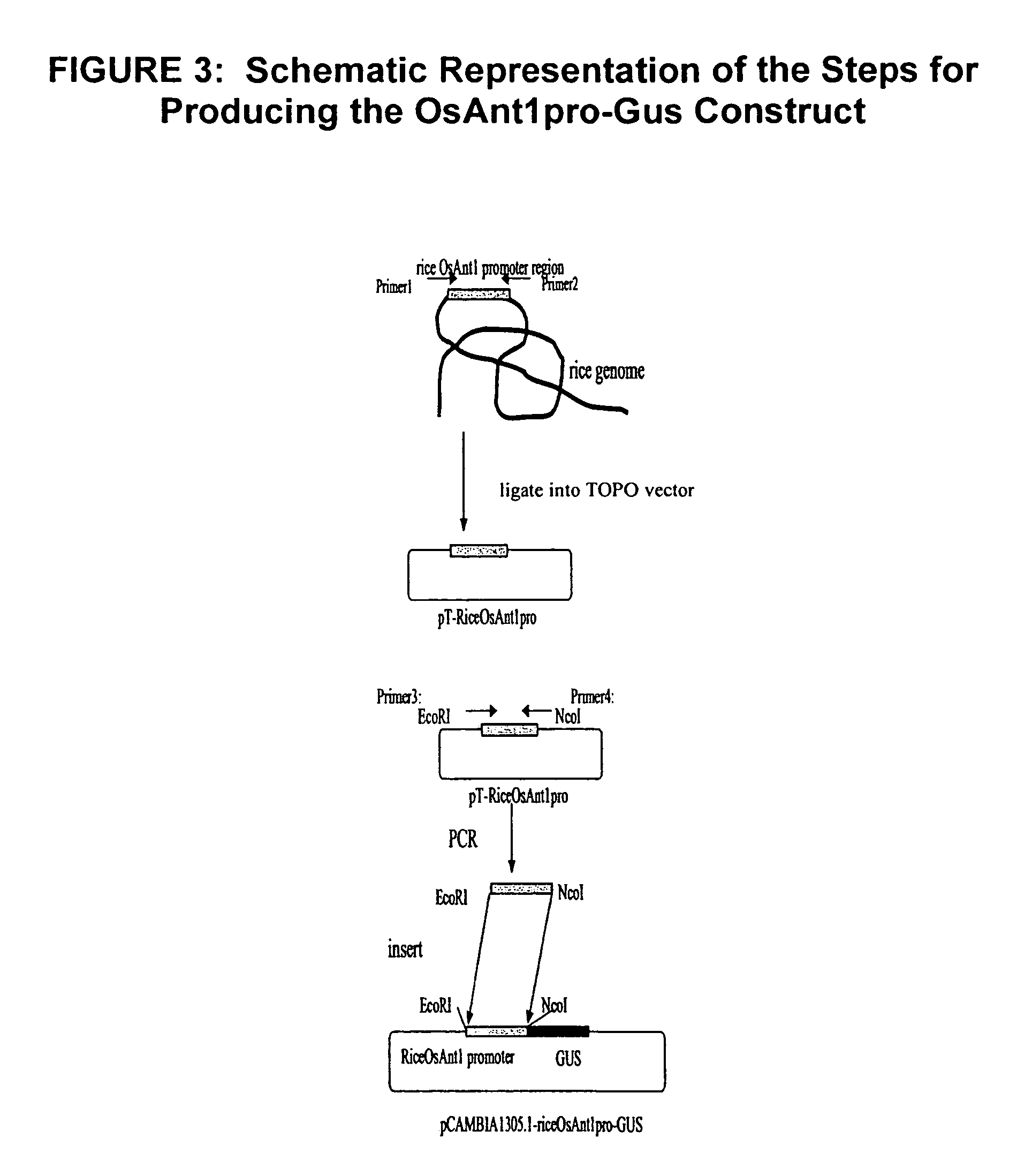Promoter sequence obtained from rice and methods of use
a technology of promoter sequence and rice, which is applied in the direction of transferases, peptide sources, fused cells, etc., can solve the problems of deterioration of soil quality, pollution and health hazards, and affecting the production of rice, so as to achieve the desired yield, and increase the biomass and seed yield
- Summary
- Abstract
- Description
- Claims
- Application Information
AI Technical Summary
Benefits of technology
Problems solved by technology
Method used
Image
Examples
example 1
Isolation And Characterization of the OsAnt1 Promoter Sequence
[0064]The nucleotide sequence (bp 366-3175) of the btg26 gene (Stroeher et al., 1995, Plant Mol. Biol. 27:541-551; accession number S77096) was used to search the nucleotide database at NCBI using the blastn search tool. A rice sequence (accession number AF323586) was identified and this nucleotide sequence was used to search the TIGR Oryza sativa sequencing project (tigr.org / tdb / e2k1 / osa1 / ). The rice homologue of btg26, Oryza sativa antiquitin (OsAnt1), was identified on chromosome 9 of rice (accession number AP005570; 98524-101189 base pairs). A 973-bp sequence upstream of the start codon of OsAnt1 is shown in FIG. 2 (SEQ ID NO:1). The sequence of the 403 bps upstream (5′) of the ATG start codon of the OsAnt1 gene was selected for analysis. To determine if the sequence was likely to function as a promoter sequence, the sequence was analyzed using the TSSP plant promoter prediction software available on the web. The anal...
example 2
Genetic Constructs Containing OsAnt1 Promoter Sequence
[0070]Genetic constructs containing OsAnt1 promoter sequence driving the beta-glucuronidase (GUS) reporter gene (OsAnt1pro-Gus) or the barley AlaAT gene (OsAnt1pro-AlaAT) were produced using the steps shown schematically in FIGS. 3 and 4, respectively.
RiceOsAnt1pro-GUS Construct
[0071]The RiceOsAnt1pro-GUS construct was produced by amplifying the pT-RiceOsAnt1pro template using the following primers:
[0072]
Primer 3: EcoRI-OsAnt1 promoter sequence(SEQ ID NO:4)GGAATTCAGGAAGTGATTTTTPrimer 4: NcoI-OsAnt1 promoter sequence(SEQ ID NO:5)CATGCCATGGATGGCAGAAGA
The resultant PCR fragments were ligated into the plant binary vector, pCAMBIA1305.1, digested with EcoR1 and Nco1 to produce a pCAMBIA1305.1-riceOsAnt1pro-GUS construct. The EcoRI and NcoI sequences at the end of primers 3 and 4, respectively, allowed insertion of the PCR fragment into the pCAMBIA1305.1 vector, replacing the existing CaMV35s promoter with the OsAnt1 promoter sequence....
example 3
Transformation of Rice Plants With Vectors Including OsAnt1
[0078]pCAMBIA1305.1-riceOsAnt1pro-GUS and pCAMBIA1300-riceOsAnt1pro-AlaAT were transferred into Agrobacterium strain EHA105 (Hood et al., (1993) Transgenic Res. 2: 208-218) by electroporation (Sambrook et al. 1989 in Molecular Cloning, A Laboratory Manual Cold Spring Harbor, N.Y.: Cold Spring Harbor Laboratory Press). Agrobacterium cells were plated on solid AB medium (Chilton et al. 1974) containing 50 mg / l kanamycin and incubated at 28° C. for 3 days. The bacteria were then collected with a flat spatula and resuspended in liquid co-cultivation medium (R2-CL, Table 1) by gentle vortexing prior to transforming the rice tissues.
Transformation of Rice
[0079]Mature seeds of rice (Oryza sativa L. cv. Nipponbare) were used in the transformation experiment. The seeds were dehusked and surface sterilized with 50% bleach plus 0.1% Tween-20 for 10 min followed by dipping (1 min) in 70% (v / v) ethanol and then rinsing five times in ster...
PUM
| Property | Measurement | Unit |
|---|---|---|
| v/v | aaaaa | aaaaa |
| v/v | aaaaa | aaaaa |
| pH | aaaaa | aaaaa |
Abstract
Description
Claims
Application Information
 Login to View More
Login to View More - R&D
- Intellectual Property
- Life Sciences
- Materials
- Tech Scout
- Unparalleled Data Quality
- Higher Quality Content
- 60% Fewer Hallucinations
Browse by: Latest US Patents, China's latest patents, Technical Efficacy Thesaurus, Application Domain, Technology Topic, Popular Technical Reports.
© 2025 PatSnap. All rights reserved.Legal|Privacy policy|Modern Slavery Act Transparency Statement|Sitemap|About US| Contact US: help@patsnap.com



